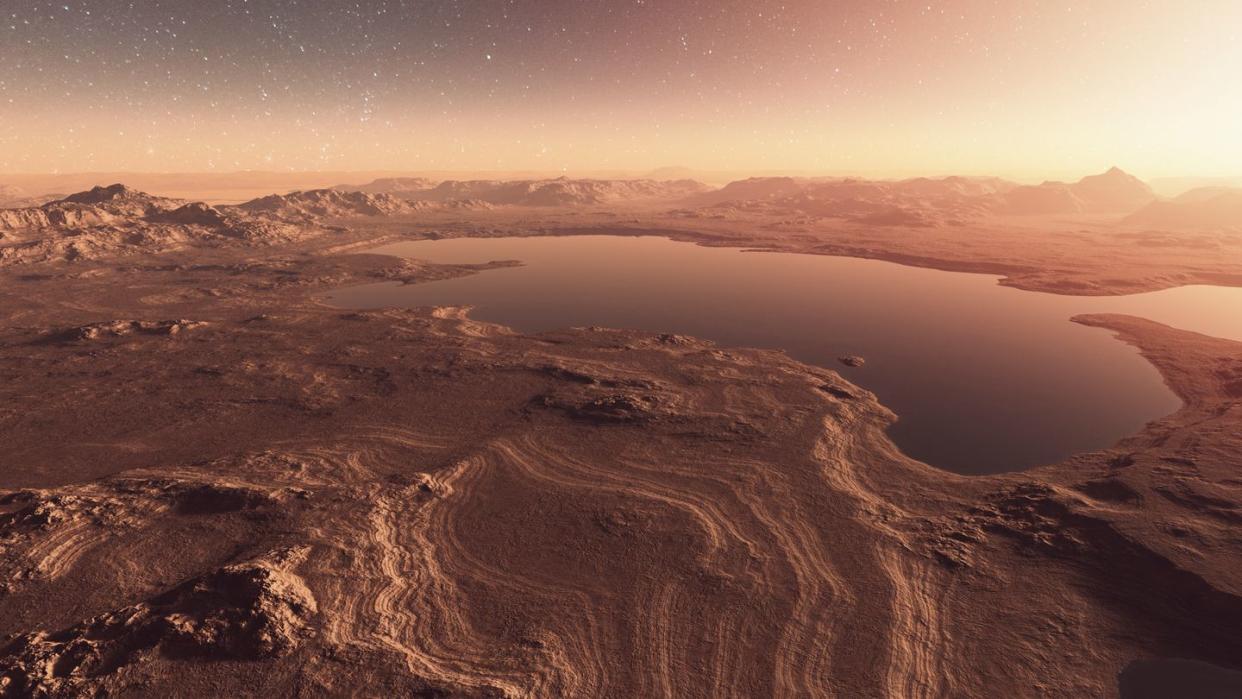A Laser Zapped the Rocks on Mars and Revealed a Long-Lost Water World

Around four billion years ago, during its Noarchian geologic period, Mars was likely filled with oceans, rivers, and lakes.
A new study, analyzing data from a 2017 soil analysis from Gale crater, discovered high levels of manganese, a surprising find as manganese enrichment on Earth often requires oxygen and microbes.
The study theorizes that water percolation into soils along ancient waterways could’ve created these deposits, and they might’ve even supported ancient microbial life, much like oxidated states of manganese due on Earth today.
Water-filled oceans, meandering river deltas, varying seasons, and an insulating atmosphere are usually descriptors for Earth—the only known rock to support life in the solar system. But during the Noarchian, a period in Mars’ history some 4.1 to 3.5 billion years ago, these descriptions perfectly matched the fourth rock from the Sun. Back then, the not-so-red planet could’ve even supported life. In fact, Mars boasts the oldest known prebiotic, life-supporting conditions.
Of course, the Mars of today isn’t so hospitable—it’s atmosphere is nearly non-existent, riverbeds are dried up, and any water is now locked under Mars iron oxide-rich soil or CO2-filled ice caps. In other words, it isn’t a great place for humans, so luckily we’ve sent robots in our place to glimpse into our planetary neighbor’s geologic past.
This week a new study, published in the Journal of Geophysical Research: Planets, finds more compelling evidence of Mars’ Earth-like beginnings. Back in May 2017, NASA's Curiosity rover, (now the senior robot exploring Mars after Opportunity called it quits in 2019), used its ChemCam instrument to analyze a large grain soil samples in the Gale crater, a 3.7 million-year-old impact crater that’s been Curiosity’s sole obsession for 12 years and running. Now, scientists at Los Alamos National Laboratory have discovered traces of “higher-than-usual” amounts of manganese locked away in these lakebed rocks. This high concentration of manganese means these sediments must’ve formed in some kind of river, delta, or lake shore.
“The Gale lake environment, as revealed by these ancient rocks, gives us a window into a habitable environment that looks surprisingly similar to places on Earth today,” ChemCam’s principal investigator Nina Lanza, said in a press statement. “Manganese minerals are common in the shallow, oxic waters found on lake shores on Earth, and it’s remarkable to find such recognizable features on ancient Mars.”
The piece of tech that’s central to the ChemCam is a high-powered laser that can deliver a dizzying 1 million watts of power into the area the side of a pin-head. While only providing this burst of energy for five-billionths of a second, it’s enough to excite electrons in the soil sample and the spectrometer “reads” the light, detailing the atomic makeup of the sample.
The puzzling thing about manganese is that, at least on Earth the enrichment process is sped up by microbes and oxygen—not exactly modern Mars has in spades.
“On Mars, we don’t have evidence for life, and the mechanism to produce oxygen in Mars’s ancient atmosphere is unclear, so how the manganese oxide was formed and concentrated here is really puzzling,” Los Alamos National Laboratory’s Patrick Gasda, lead author on the study, said in a press statement. “These findings point to larger processes occurring in the Martian atmosphere or surface water and shows that more work needs to be done to understand oxidation on Mars.”
It’s possible that manganese became enriched in these deposits as water percolate through soil adjacent to some ancient river or lake. Because oxidation states of manganese can be used by terrestrial microbes for energy, it’s possible that Martian microbial life similarly fed on these deposits.
Today, Earth stands alone in the Solar System for its remarkable ability to support life, but look back four billion years in the past, and Mars would’ve been the clear favorite for finding life.
You Might Also Like

